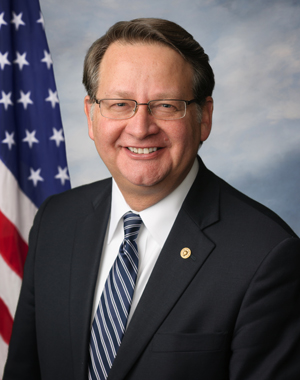Since World War II, the United States has led the world in groundbreaking innovation that grows our economy and propels our nation forward. At the heart of this innovation is basic scientific research, which drives everything from developments that improve our daily lives, like the Internet and smartphones, to medical discoveries that save lives, like mapping the human genome.
Today, however, as our competitors in Asia and around the world are making critical investments in their own research priorities, U.S. federal science and research budgets are stagnant or even shrinking. During the space race of the 1960s, America’s federal investment in research and development (R&D) reached nearly 2% of the nation’s gross domestic product (GDP). Federal investment is currently at a historic low of 0.78%. (These figures are documented in recent reports from the National Science Foundation and the American Association for the Advancement of Science and in a recent article in Bloomberg Business.) If we want to keep the United States at the forefront of innovation, Congress must come together to strengthen our commitment to scientific research.
Basic scientific research is the seed corn of innovation and new discoveries, the kind of discoveries that transform our economy, build new industries, increase productivity, and enhance U.S. competitiveness in a global economy. In my home state of Michigan, our universities are leading exciting new research in fields ranging from biosciences to physics to aerospace engineering and advanced manufacturing. Across the country, other university labs are pursuing equally exciting research endeavors. Federal investments in this kind of research yield transformative technologies that will become the jobs and industries of the future and pay dividends for our country in the decades to come.
To ensure our nation’s long-term prosperity, Congress must increase the federal government’s investment in R&D to 1% of GDP.
Certainly, the quest for greater knowledge about the dynamic planet on which we live is one such worthy investment. Geoscientists are working to analyze and predict the effects of natural disasters like earthquakes and tsunamis. Early warnings for these extreme events will save lives and reduce losses. Other Earth scientists are investigating minerals and resources needed to further economic prosperity, and climate scientists across the globe are racing to better understand the effects of human activity on our atmosphere. From weather prediction to hazard mitigation, geoscience research is essential to the well-being and prosperity of the United States and its citizens.
Over the next few months, the Senate Committee on Commerce, Science, and Transportation will be developing new legislation that will identify our federal research priorities for the coming years. In my position as ranking member of the Subcommittee on Space, Science, and Competitiveness, I have been working with my Commerce Committee colleague Senator Cory Gardner (R-Colo.) and other committee members to lead discussions and gather input from the U.S. science and research community to shape our future priorities. We have heard from experts representing industry, academia, business incubators, and government. Each expressed a common concern: Insufficient and unpredictable funding for basic research cripples U.S. research efforts and undermines our economic potential.
From weather prediction to hazard mitigation, geoscience research is essential to the well-being and prosperity of the United States and its citizens.
To ensure our nation’s long-term prosperity, Congress must increase the federal government’s investment in R&D to 1% of GDP. This commitment should include a focus on increased federal support for basic research because it is an essential component of any innovation economy. Together with the private sector investment in R&D, our national investment will reach almost 3% of GDP, matching China’s path.
Funding for basic research is certainly not the only issue we need to address. We can enact policies to drive better buying power for each dollar invested in research. We can work to ensure that more students have access to the best science, technology, engineering, and math (STEM) education, and we can encourage entrepreneurship. But all of these fixes rest on a foundation of sustained growth of U.S. investment in basic research and technology.
Investments in basic research are a down payment on America’s future and the key to keeping our nation on the cutting edge of an increasingly competitive global economy. As the U.S. science and research community works to discover the next major scientific advancement, we in Congress must do our part by supporting and investing in their efforts to drive economic growth, unleash increased productivity, enhance our safety and security, and make the world a better place for future generations.
—Senator Gary Peters (D-Mich.), Washington, D.C.; contact: www.peters.senate.gov/contact/email-gary
Senator Peters is a member of the U.S. Senate Committee on Commerce, Science, and Transportation and serves as the ranking member of the Subcommittee on Space, Science, and Competitiveness. Earlier this year, Peters co-led an innovation and competitiveness working group to gather input from the U.S. science and research community and other interested parties on federal research and development policy priorities.
Citation: Peters, G. (2015), Invest in scientific research to drive innovation, Eos, 96, doi:10.1029/2015EO041377. Published on 15 December 2015.
Text not subject to copyright.
Except where otherwise noted, images are subject to copyright. Any reuse without express permission from the copyright owner is prohibited.
Text not subject to copyright.
Except where otherwise noted, images are subject to copyright. Any reuse without express permission from the copyright owner is prohibited.


